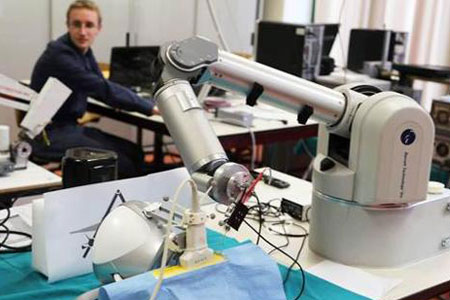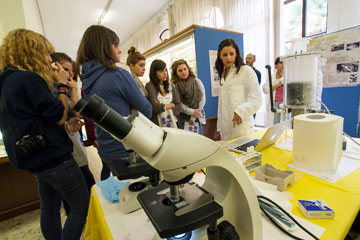Research interests
| Topic |
People |
Description |
| AI & robotics |
Alberto Castellini
Alessandro Farinelli
Daniele Meli
|
Application of AI techniques to increase the autonomy level of robotic systems. This includes the adaptation of algorithms for autonomous planning and reinforcement learning to: i) handle the cyber-physical constraints imposed by robots operating in partially observable and uncertain scenarios; ii) guarantee the reliability and robustness of robotic systems that operate in open environments (e.g., interacting with humans and other robotic systems); iii) facilitate the use of robotic systems in realistic application by proposing novel paradigms of interaction with users (e.g., train a robot to execute a task rather than specify a control program). |
| Planning under uncertainty |
Alberto Castellini
Alessandro Farinelli
|
Planning under uncertainty focuses on sequential decision-making in uncertain environments, namely, situations with imperfect information. (Partially Observable) Markov Decision Processes are used to represent these contexts. The goal of planning under uncertainty is to generate optimal policies for these problems, namely, functions able to suggest optimal actions in situations faced by the agent. The main challenges concern dealing with large problems (scalability), acquiring new knowledge about the environment (adaptability), preventing undesirable behaviors (safety), safe policy improvement (robustness), interacting with humans (human-in-the-loop), supporting human understanding (explainability), bridging planning and reinforcement learning (model-based RL), bridging symbolic and probabilistic/data-driven planning. Among the most recent approaches to tackle these challenges, online methods based on Monte Carlo Tree Search have achieved strong results in the last years in both strategic games (e.g., board games such as Go) and real-world applications (e.g., robotics, cyber-physical systems, and decision support systems). |
| Multi-agent planning |
Alberto Castellini
Alessandro Farinelli
|
Multiagent planning deals with planning approaches applied to multi-agent systems. The main goal of these techniques is to generate solutions for sequential decision making that promote synergy among multiple autonomous agents to achieve collective goals. Among the main topic of this field there are decentralized optimization, multiagent path planning, multiagent learning, cooperation and coordination. Important tools in this fiels are, for instance, coordination graphs that are used in recent cooperative multi-agent planning and reinforcement learning (MARL) algorithms where coordination between agents is essential to accomplish the task. Coordination graphs allow to represent how agents can coordinate using some communication via message passing. Applications of multiagent planning span over a wide set of domains including autonomous driving, logistic (e.g., fleet of autonomous robots), environmental monitoring (fleet of mobile drones for data acquisition). |
| Neurosymbolic planning |
Alberto Castellini
Alessandro Farinelli
Daniele Meli
|
Neurosymbolic AI focuses on combining standard data-driven AI (e.g., reinforcement learning) with symbolic approaches (e.g., logic programming and inductive logic programming), in order to enhance the explainability of AI systems (e.g., autonomous agents), their efficacy in human-robot interaction, and foster incremental knowledge acquisition and generalization in planning. |







